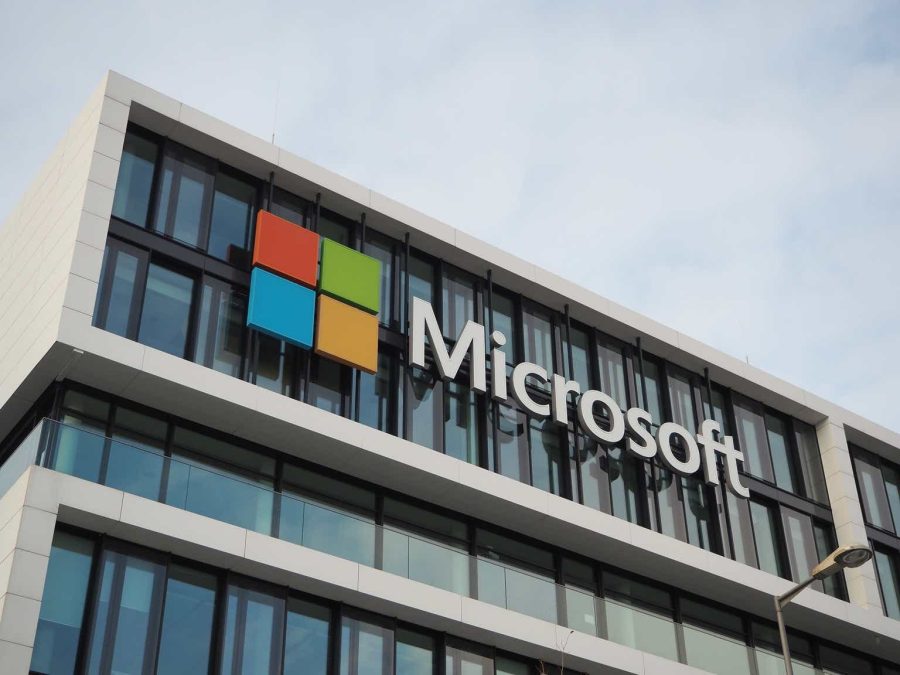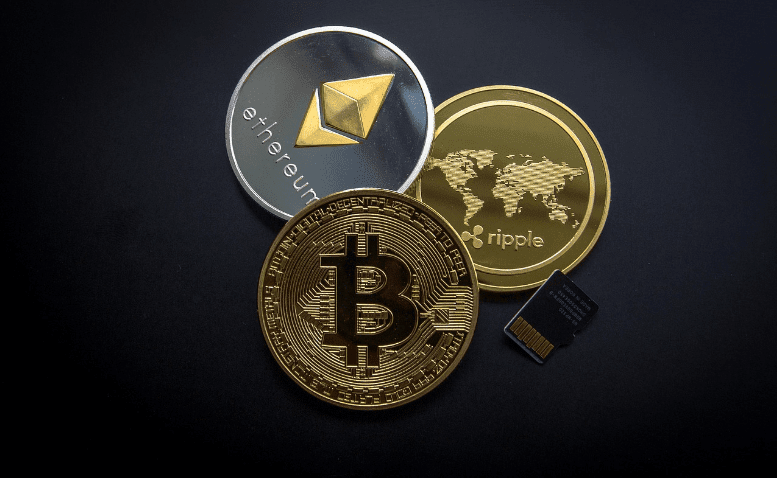July 14, 2024 This Week Top S&P 500 Gainers & Losers
Tesla Q2: The Bottom Is Likely In
Tesla: Time To Take Profits
Microsoft: The Q4 Results Should Surprise You
Tesla: Optimus And FSD Probably Won’t Save The Day
April 23, 2024 Maximizing Profits: When is the Right Time to Sell Your Business?
April 12, 2024 Improve Your Financial Status: A How-To Guide
April 12, 2024 How ZIM Integrated Container Tracking is Revolutionizing Global Trade
March 15, 2024 6 Best Growth Stocks To Buy Now According to Metatrader 5

Intel (INTC) Stock Forecast for 2024–2028. Sell or Buy?
Updated: July 27, 2024 (04:04)
Sector: TechnologyThe share price of Intel Corp. (INTC) now
50/200 Day Moving Average: $31.68 / $38.8
This figure corresponds to the Average Price over the previous 50/200 days. For Intel stocks, the 50-day moving average is the resistance level today.
For Intel stocks, the 200-day moving average is the resistance level today.
Are you interested in Intel Corp. stocks and want to buy them, or are they already in your portfolio? If yes, then on this page you will find useful information about the dynamics of the Intel stock price in 2024, 2025, 2026, 2027, 2028. How much will one Intel share be worth in 2024 - 2028?
When should I take profit in Intel stock? When should I record a loss on Intel stock? What are analysts' forecasts for Intel stock? What is the future of Intel stock? We forecast Intel stock performance using neural networks based on historical data on Intel stocks. Also, when forecasting, technical analysis tools are used, world geopolitical and news factors are taken into account.
Intel stock prediction results are shown below and presented in the form of graphs, tables and text information, divided into time intervals. (Next month, 2024, 2025, 2026, 2027 and 2028) The final quotes of the instrument at the close of the previous trading day are a signal to adjust the forecasts for Intel shares. This happens once a day.
Historical and forecast chart of Intel stock
The chart below shows the historical price of Intel stock and a prediction chart for the next month. For convenience, prices are divided by color. Forecast prices include: Optimistic Forecast, Pessimistic Forecast, and Weighted Average Best Forecast. Detailed values for the Intel stock price can be found in the table below.
Long-term forecasts by years.
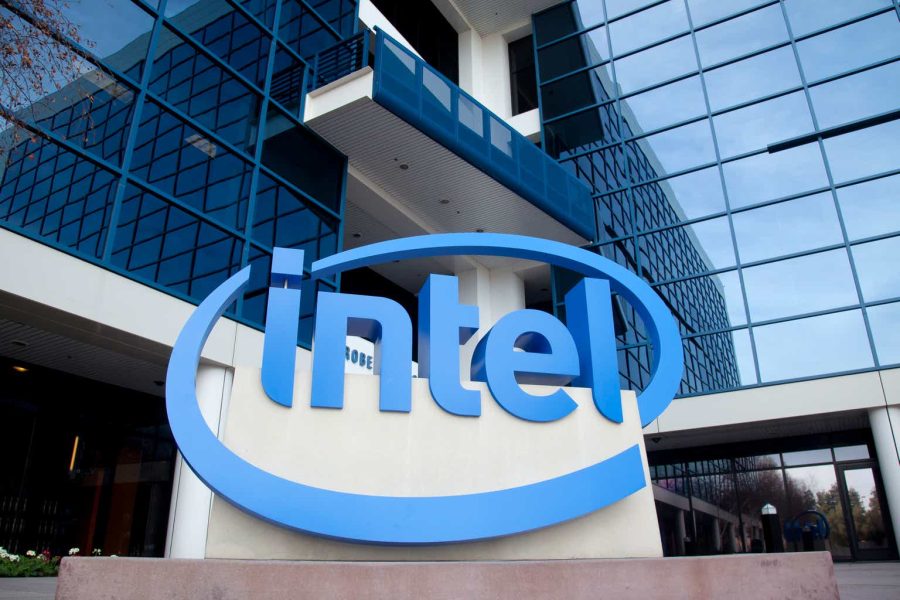

When forecasting INTC stock rates, analysts need to consider several critical factors and events poised to influence Intel's stock performance in the near future. Intel faces fierce competition from AMD and Nvidia, particularly in its Client Computing Group (CCG) and Datacenter and AI (DCAI) segments, which is the most significant factor that could impact its market position and stock price.
### Key Influences on INTC Stock RatesUpcoming product launches from AMD and Nvidia, including Ryzen and EPYC processors and Nvidia's Rubin architecture, could challenge Intel's offerings, placing enormous pressure on the company to innovate and maintain its market leadership. However, Intel is not just standing still; the company forecasts a 9% revenue growth for FY2024, driven by new products like the 2nm Arrow Lake CPUs and AI-focused processors.
Technological advancements such as Intel's Gaudi 3 server GPU and Intel Ultra processors are expected to drive premium pricing and boost long-term revenue. But profitability remains a concern, with lower-than-expected margins impacted by high costs. Intel's substantial R&D expenditures aimed at advancing process technology, while necessary for long-term growth, have also strained short-term profitability.
Additionally, Intel's performance is intricately tied to broader economic conditions and market recovery. Fluctuations in IT spending, data center capex, and telecom capex could either enhance or hinder Intel's growth prospects.
Analysts can utilize these factors to make accurate predictions on INTC stock price by closely monitoring:
- Competitor product launches and market reactions
- Intel’s revenue growth and new product performance
- Technological innovation outcomes and market acceptance
- Profitability metrics and margin trends
- R&D spending relative to revenue growth
- Macro-economic conditions and their impact on key Intel segments
In summation, while the INTC stock forecast is influenced by a complex interplay of factors, competition, revenue growth, technological advancements, and broader market conditions are the primary determinants of Intel’s market performance and stock value. By focusing on these aspects, analysts can more accurately predict changes in Intel's stock price, presenting a comprehensive view for investors.
Review the original Analysis
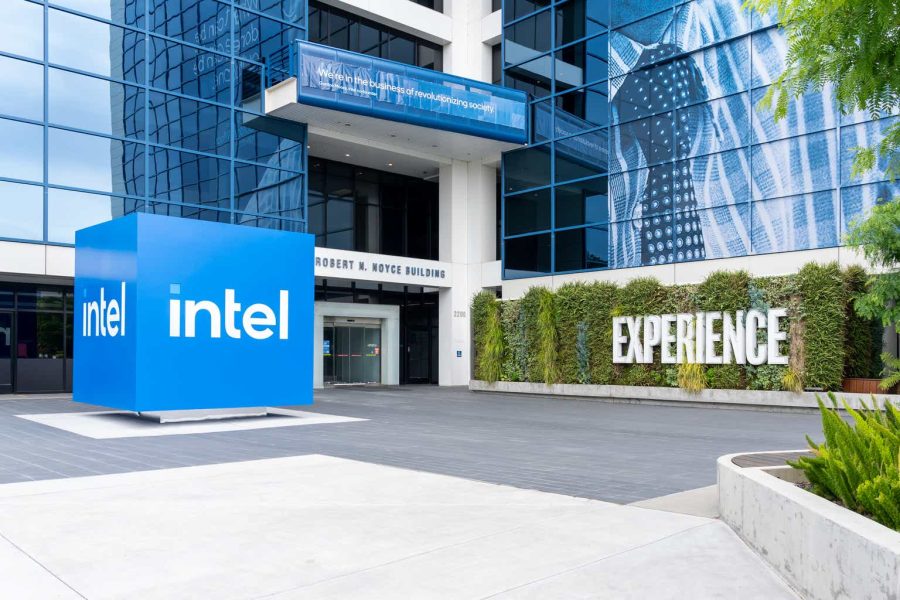

The stock performance of Intel (INTC) has been under significant scrutiny due to multiple recent setbacks that could drastically influence its trajectory. Among the most impactful events, Microsoft's decision to switch from Intel chips to Qualcomm processors in its Surface devices stands out. This shift highlights Intel's declining competitive edge in performance and efficiency, thereby worrying investors about the potential loss of other major customers. As a result, INTC stock could see a downward trend as confidence ebbs.
Crucial Operational Challenges
Another critical factor impacting the INTC stock price is Intel’s reliance on TSMC for advanced process nodes. This dependency stems from Intel's internal delays and casts doubt on its promises to regain process leadership. The erosion of trust might lead to suppressed stock valuations. Similarly, the significant decline in Intel's foundry business, evidenced by dropping external customer revenues, further dents investor confidence.
Moreover, Intel has struggled with delays in achieving process node timelines, such as with Intel 3 and Lunar Lake. This consistent lag behind TSMC not only challenges market competitiveness but also potentially hinders stock growth. Additionally, the company’s insistence on x86 architecture over more energy-efficient alternatives like ARM and GPU accelerators restricts its market adaptability.
For analysts aiming to make accurate forecasts of INTC company's stock price, the focus should be on:
- Monitoring customer shifts, like Microsoft's transition to Qualcomm.
- Assessing Intel's dependence on TSMC and its ability to meet process node milestones.
- Evaluating the health of Intel's foundry business and broader revenue streams.
- Observing Intel's technological advancements and market alignment in architecture.
By closely evaluating these factors, analysts can develop well-rounded INTC stock forecasts, significantly improving the accuracy of their stock price predictions.
Review the original Analysis
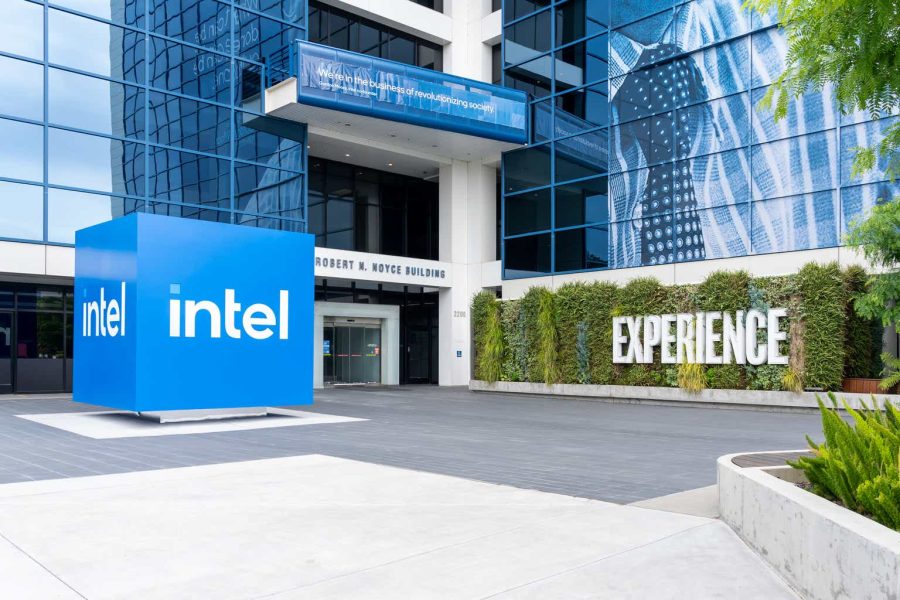
Key Drivers Influencing INTC Stock Rate Forecast

When forecasting Intel's (INTC) stock rates, several key factors and upcoming events must be considered. The most significant will be the performance of Intel's Data Center and AI Group (DCAI), as its 5th-generation Xeon processors, featuring AI acceleration capabilities, are expected to elevate margins and drive sales. This shift could enable Intel to regain market share from top rivals like AMD and NVIDIA, directly affecting its stock valuation.
Strategic Partnerships and Market Dynamics
Another pivotal element is Intel's ambitious goal to become the second-largest external foundry by 2030. Securing major orders from clients like Microsoft for its 18A process node underscores the strong potential for future revenue. This diversification strategy is likely to elevate Intel's stock value as it positions itself against industry leaders like TSMC. Furthermore, Intel's cost-cutting initiatives aimed at improving operational efficiency and profitability might also significantly enhance investor sentiment, potentially boosting the stock price.
Market analysts must also consider Intel's participation in the expanding AI market. Products like the Gaudi 3 AI Accelerator stand poised to compete vigorously with NVIDIA and AMD. Strong performance here will be crucial for Intel’s revenue and stock price. Additionally, macroeconomic conditions, such as economic cycles and capital availability, will play a pivotal role in shaping the company's financial health and attractiveness as a stock.
- Data Center and AI Group Performance
- Foundry Services and Strategic Partnerships
- Cost-Cutting Initiatives
- AI Market Expansion
- Economic Factors and Market Cycles
Overall, a comprehensive analysis of these factors will enable analysts to generate more accurate predictions on the future of Intel's stock rates, enhancing the investment decision-making process.
Review the original Analysis
Intel Corporation is an American corporation that manufactures a wide range of electronic devices and computer components, including microprocessors, system logic kits, etc. It should be noted that Intel microprocessors are used in more than 80% of PCs worldwide.
Intel daily forecast for a month
| Date | Target | Pes. | Opt. | Vol., % |
|---|---|---|---|---|
| Jul 29 | 31.51 | 31.25 | 31.85 | 1.94 |
| Jul 30 | 31.25 | 30.77 | 31.70 | 3.05 |
| Jul 31 | 31.06 | 30.73 | 31.51 | 2.55 |
| Aug 01 | 31.25 | 30.78 | 31.37 | 1.93 |
| Aug 02 | 31.54 | 31.05 | 31.74 | 2.19 |
| Aug 03 | 31.98 | 31.70 | 32.30 | 1.88 |
| Aug 04 | 32.16 | 31.81 | 32.42 | 1.92 |
| Aug 05 | 31.90 | 31.54 | 32.06 | 1.64 |
| Aug 06 | 32.13 | 31.93 | 32.40 | 1.45 |
| Aug 07 | 31.69 | 31.40 | 32.06 | 2.10 |
| Aug 08 | 31.11 | 30.93 | 31.59 | 2.15 |
| Aug 09 | 31.06 | 30.63 | 31.39 | 2.47 |
| Aug 10 | 31.68 | 31.52 | 31.84 | 1.01 |
| Aug 11 | 31.62 | 31.19 | 31.89 | 2.25 |
| Aug 12 | 31.94 | 31.73 | 32.22 | 1.55 |
| Aug 13 | 32.23 | 31.82 | 32.44 | 1.97 |
| Aug 14 | 32.86 | 32.61 | 33.19 | 1.77 |
| Aug 15 | 33.22 | 32.92 | 33.36 | 1.35 |
| Aug 16 | 33.07 | 32.65 | 33.34 | 2.11 |
| Aug 17 | 33.38 | 32.85 | 33.64 | 2.42 |
| Aug 18 | 33.54 | 33.20 | 34.03 | 2.48 |
| Aug 19 | 33.27 | 33.12 | 33.67 | 1.65 |
| Aug 20 | 33.92 | 33.68 | 34.17 | 1.47 |
| Aug 21 | 33.58 | 33.34 | 33.85 | 1.53 |
| Aug 22 | 33.58 | 33.05 | 34.03 | 2.97 |
| Aug 23 | 34.14 | 33.76 | 34.28 | 1.54 |
| Aug 24 | 33.70 | 33.16 | 33.90 | 2.22 |
| Aug 25 | 33.25 | 33.01 | 33.60 | 1.79 |
| Aug 26 | 32.87 | 32.43 | 33.16 | 2.25 |
| Aug 27 | 32.91 | 32.72 | 33.21 | 1.51 |
Intel Daily Price Targets
Intel Stock Forecast 07-29-2024.
Forecast target price for 07-29-2024: $31.51.
Positive dynamics for Intel shares will prevail with possible volatility of 1.899%.
Pessimistic target level: 31.25
Optimistic target level: 31.85
Intel Stock Forecast 07-30-2024.
Forecast target price for 07-30-2024: $31.25.
Negative dynamics for Intel shares will prevail with possible volatility of 2.957%.
Pessimistic target level: 30.77
Optimistic target level: 31.70
Intel Stock Forecast 07-31-2024.
Forecast target price for 07-31-2024: $31.06.
Negative dynamics for Intel shares will prevail with possible volatility of 2.484%.
Pessimistic target level: 30.73
Optimistic target level: 31.51
Intel Stock Forecast 08-01-2024.
Forecast target price for 08-01-2024: $31.25.
Positive dynamics for Intel shares will prevail with possible volatility of 1.892%.
Pessimistic target level: 30.78
Optimistic target level: 31.37
Intel Stock Forecast 08-02-2024.
Forecast target price for 08-02-2024: $31.54.
Positive dynamics for Intel shares will prevail with possible volatility of 2.147%.
Pessimistic target level: 31.05
Optimistic target level: 31.74
Intel Stock Forecast 08-03-2024.
Forecast target price for 08-03-2024: $31.98.
Positive dynamics for Intel shares will prevail with possible volatility of 1.842%.
Pessimistic target level: 31.70
Optimistic target level: 32.30
INTC (INTC) Monthly Stock Prediction for 2024
| Month | Target | Pes. | Opt. | Vol., % |
|---|---|---|---|---|
| Aug. | 31.95 | 31.13 | 33.14 | 6.07 |
| Sep. | 32.89 | 32.53 | 34.10 | 4.63 |
| Oct. | 32.13 | 31.23 | 33.13 | 5.72 |
| Nov. | 32.79 | 32.36 | 33.32 | 2.85 |
| Dec. | 33.41 | 32.80 | 33.95 | 3.40 |
Intel forecast for this year
Intel Stock Prediction for Aug 2024
An uptrend is forecast for this month with an optimal target price of $31.9457. Pessimistic: $31.13. Optimistic: $33.14
Intel Stock Prediction for Sep 2024
An uptrend is forecast for this month with an optimal target price of $32.888. Pessimistic: $32.53. Optimistic: $34.10
Intel Stock Prediction for Oct 2024
An downtrend is forecast for this month with an optimal target price of $32.1316. Pessimistic: $31.23. Optimistic: $33.13
Intel Stock Prediction for Nov 2024
An uptrend is forecast for this month with an optimal target price of $32.7903. Pessimistic: $32.36. Optimistic: $33.32
Intel Stock Prediction for Dec 2024
An uptrend is forecast for this month with an optimal target price of $33.4133. Pessimistic: $32.80. Optimistic: $33.95
Intel (INTC) Monthly Stock Prediction for 2025
| Month | Target | Pes. | Opt. | Vol., % |
|---|---|---|---|---|
| Jan | 33.35 | 32.81 | 34.63 | 5.25 |
| Feb | 33.93 | 32.95 | 34.66 | 4.94 |
| Mar | 33.15 | 31.99 | 33.93 | 5.72 |
| Apr | 32.83 | 31.82 | 33.67 | 5.51 |
| May | 33.15 | 31.99 | 33.88 | 5.58 |
| Jun | 33.26 | 32.15 | 34.41 | 6.57 |
| Jul | 32.45 | 32.09 | 33.00 | 2.75 |
| Aug | 33.45 | 32.30 | 34.67 | 6.85 |
| Sep | 33.67 | 33.13 | 34.36 | 3.58 |
| Oct | 33.49 | 32.72 | 33.89 | 3.46 |
| Nov | 34.59 | 34.11 | 35.91 | 5.01 |
| Dec | 35.32 | 34.96 | 36.47 | 4.12 |
Intel (INTC) Monthly Stock Prediction for 2026
| Month | Target | Pes. | Opt. | Vol., % |
|---|---|---|---|---|
| Jan | 36.25 | 35.78 | 36.85 | 2.90 |
| Feb | 36.07 | 35.03 | 37.41 | 6.36 |
| Mar | 36.78 | 35.87 | 38.23 | 6.16 |
| Apr | 36.28 | 35.08 | 36.93 | 5.01 |
| May | 36.44 | 36.02 | 36.82 | 2.18 |
| Jun | 36.68 | 35.95 | 37.34 | 3.73 |
| Jul | 37.54 | 36.96 | 38.80 | 4.74 |
| Aug | 37.03 | 35.57 | 38.37 | 7.29 |
| Sep | 38.09 | 37.48 | 39.12 | 4.19 |
| Oct | 39.96 | 38.78 | 41.09 | 5.64 |
| Nov | 40.28 | 38.99 | 40.76 | 4.35 |
| Dec | 40.42 | 39.33 | 41.47 | 5.17 |
Intel (INTC) Monthly Stock Prediction for 2027
| Month | Target | Pes. | Opt. | Vol., % |
|---|---|---|---|---|
| Jan | 40.44 | 38.92 | 41.43 | 6.05 |
| Feb | 41.19 | 39.58 | 41.84 | 5.41 |
| Mar | 42.61 | 41.29 | 43.33 | 4.72 |
| Apr | 43.59 | 42.93 | 44.17 | 2.81 |
| May | 44.39 | 43.79 | 45.44 | 3.62 |
| Jun | 45.55 | 44.23 | 46.64 | 5.18 |
| Jul | 46.96 | 45.69 | 47.85 | 4.51 |
| Aug | 48.63 | 48.02 | 50.13 | 4.22 |
| Sep | 50.69 | 49.50 | 52.31 | 5.38 |
| Oct | 50.51 | 49.71 | 51.07 | 2.67 |
| Nov | 49.28 | 48.44 | 50.19 | 3.49 |
| Dec | 50.43 | 49.10 | 52.15 | 5.85 |
Intel (INTC) Monthly Stock Prediction for 2028
| Month | Target | Pes. | Opt. | Vol., % |
|---|---|---|---|---|
| Jan | 50.94 | 49.41 | 52.98 | 6.73 |
| Feb | 50.68 | 49.82 | 52.71 | 5.48 |
| Mar | 51.22 | 50.50 | 52.29 | 3.43 |
| Apr | 52.29 | 51.38 | 53.21 | 3.44 |
| May | 50.98 | 49.53 | 52.90 | 6.36 |
| Jun | 51.62 | 49.71 | 52.89 | 6.00 |
| Jul | 50.74 | 49.04 | 51.66 | 5.06 |
| Aug | 53.18 | 52.04 | 54.88 | 5.18 |
| Sep | 54.46 | 53.29 | 55.16 | 3.41 |
| Oct | 54.48 | 53.78 | 55.38 | 2.90 |
| Nov | 55.08 | 53.54 | 56.82 | 5.77 |
| Dec | 54.81 | 54.15 | 56.12 | 3.52 |
Intel information and performance
2200 MISSION COLLEGE BLVD, RNB-4-151, SANTA CLARA, CA, US
Market capitalization of the Intel Corp. is the total market value of all issued shares of a company. It is calculated by the formula multiplying the number of INTC shares in the company outstanding by the market price of one share.
EBITDA of Intel is earnings before interest, income tax and depreciation of assets.
P/E ratio (price to earnings) - shows the ratio between the price of a share and the company's profit
Price/earnings to growth
Dividend Per Share is a financial indicator equal to the ratio of the company's net profit available for distribution to the annual average of ordinary shares.
Dividend yield is a ratio that shows how much a company pays in dividends each year at the stock price.
EPS shows how much of the net profit is accounted for by the common share.
Trailing P/E depends on what has already been done. It uses the current share price and divides it by the total earnings per share for the last 12 months.
Forward P/E uses projections of future earnings instead of final numbers.
Enterprise Value (EV) /Revenue
The EV / EBITDA ratio shows the ratio of the cost (EV) to its profit before tax, interest and amortization (EBITDA).
Number of issued ordinary shares
Number of freely tradable shares
Shares Short Prior Month - the number of shares in short positions in the last month.
Intel (INTC) stock dividend
Intel last paid dividends on 05/06/2024. The next scheduled payment will be on 06/01/2024. The amount of dividends is $0.5 per share. If the date of the next dividend payment has not been updated, it means that the issuer has not yet announced the exact payment. As soon as information becomes available, we will immediately update the data. Bookmark our portal to stay updated.
Last Split Date: 01/01/1970
Splitting of shares is an increase in the number of securities of the issuing company circulating on the market due to a decrease in their value at constant capitalization.
For example, a 5: 1 ratio means that the value of one share will decrease 5 times, the total amount will increase 5 times. It is important to understand that this procedure does not change the capitalization of the company, as well as the total value of assets held in private hands.


































